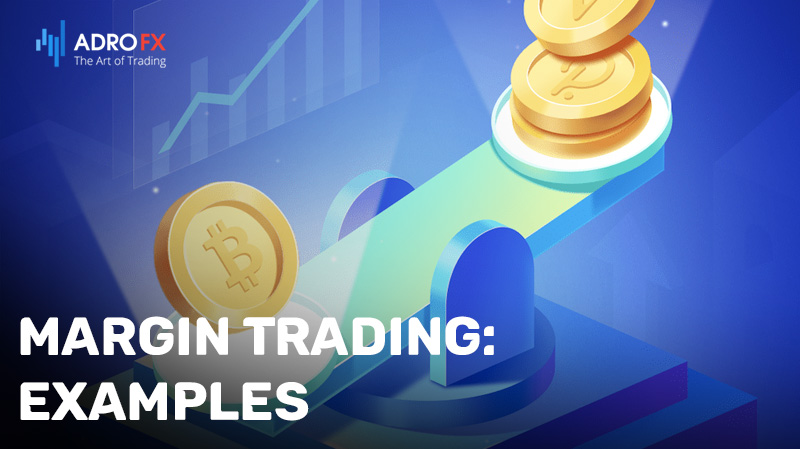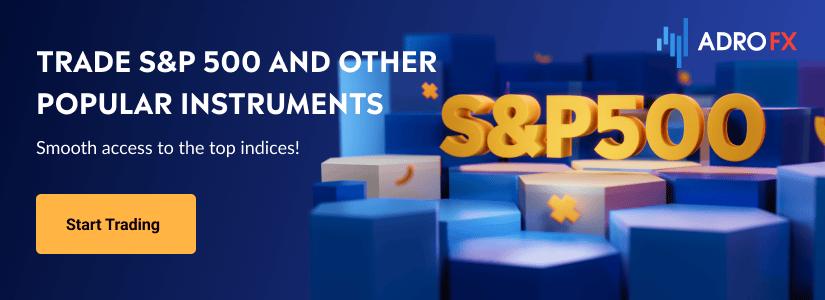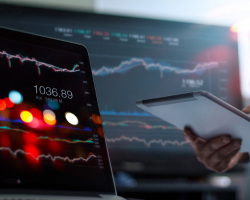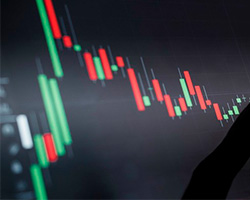What Is Margin Trading and How Does It Work?

Investors trading in the financial market commonly face issues with equity, which creates difficulties in conducting operations with currency pairs and other assets. This lack of equity is primarily due to the modest income generated from investments. Consequently, investors explore various options to address this issue, with the most popular being a margin provided by brokerage companies as collateral while obtaining credit. However, the margin has its unique features and drawbacks that a trader must be aware of before making a decision.
What Is Margin in Forex Trading?
Margin is a fairly common term, which is often encountered by participants of stock and currency exchanges, in particular forex. Different economic spheres, it has ambiguous interpretations, so it is recommended not to confuse margin in the foreign exchange market with concepts of other areas. Forex margin is a collateral amount that a trader must deposit with a brokerage company to obtain a loan with a specific maturity.
The funds provided under specific conditions can only be used when trading on the international currency market. It is also worth noting that the loan amount may be higher than the client's deposit. Margin most often takes the form of cash or securities transferred to a dealing center or intermediary. They are the insurance security for the creditor and the guarantee of return of the debt.
With the help of margin, the trader gets attractive opportunities for making beneficial trades in large volumes.
Different Ways of Using Margin in Trading
Margin trading can be used to place two types of positions:
Long
It is used when a trader plans to earn on the growth of the acquired asset price. The basic idea of margin trading in long positions is very simple: first, it is necessary to buy cheap, and then sell expensive.
Before approving a trade, the brokerage company will automatically calculate the size of the investor's liquid portfolio and determine both types of margin. If the size of the portfolio is greater than the initial margin, the broker will calculate the maximum amount of the order. Otherwise, it will not be possible to open a position.
To calculate the maximum possible order volume, the difference between the portfolio and the initial margin is divided by the risk rate. After that, the position is opened, the trader is debited from the account, and the purchased asset is added.
Then the amount of liquid portfolio is recalculated again and compared to the minimum and initial margin. If the size of the portfolio turns out to be higher than the initial margin, the investor can place the next order. And if the amount of the portfolio becomes below the minimum margin, a Margin Call is sent to the trader.
Short
It allows one to receive income in case the value of an asset decreases. According to exchange rules, an investor cannot sell assets they do not own. Therefore, the trader has to borrow assets from the broker to capitalize on the price decline. Later, the assets have to be redeemed and returned to the brokerage company.
Trading short is riskier than trading long. This is because assets can rise in value indefinitely. Over time, its value can increase by 100%, 200%, 1000%, or even more. But there is no asset whose price will fall below 0. Therefore, the fall in value is limited to 100%.
Because of this, a trader who opens short positions finds themself in a more risky position than a person who invests capital counting on asset growth. That is why the short risk rate on an asset is always set higher than the long risk rate.
A trader should be especially careful when placing short positions.

Margin Trading: Examples
It's easier to understand the nuances of margin trading using examples with specific numbers.
Trading Long
A trader sees that the exchange rate of the British pound to the American dollar is 1.36. The investor thinks the base currency will get stronger relative to the quoted currency and decides to make a deal with 1:100 leverage. To do this, the trader buys 100×100=10000 pounds for their $136.
The British currency has indeed risen, and the new exchange rate of the currency pair is 1.38. Then the investor sells the pounds they have. From each pound sold, they earn $1.38-1.36=0.02. But since the trader had a total of 10,000 GDB, the total earnings are $0.02×10000=$200 (net of spread and transaction fees).
If borrowed funds were not used, then British pounds would have been bought 100 times less. And then the earnings of the investor would be only 2 U.S. dollars instead of 200.
Trading Short
The investor believes that the particular stock is overheated and will soon become significantly cheaper. But they do not have these shares in their portfolio and, therefore, cannot sell them now at a high price. Consequently, the trader decides to sell short. To do so, they borrow 40 shares from the broker at $260 each. In fact, the total amount of the trade is $260×40=$10400.
By the end of the day, the value of the share actually falls to $220. To buy back 40 shares, the trader spends $220×40=$8800. They return the shares to the broker and earn $10400-$8800=$1600 (less the brokerage commission, spread, and asset fees).
Margin Call and Stop Out
Margin Call and Stop Out are completely different operations, usually working in tandem. And their purpose is the same - to prevent the complete bankruptcy of the trader. The Margin Call operation is a warning to a market participant that their deposit is not enough for the maintenance of this position, and they must urgently decide - to deposit if a trader is a risky person and wants to wait for the turn of events to get a return or to close all or most unsuccessful trades.
It is considered that the Margin Call is a telephone message (which has not been practiced for a long time) or a message by other means of communication between traders and brokers about the lack of funds in trading accounts. As a rule, such Margin Call operation has not been practiced for a long time. In its turn Stop Out is a certain level of losses at which the (most) losing trades are automatically closed.
In this case, a broker independently, without warning, closes the positions. Practically it is the same Stop Loss, but its value is usually defined by a broker. Stop Out is expressed in percent and is defined as the ratio of the trader's assets (Equity) and pledge (Margin). As a rule, the minimum value of Stop Out at which the trades are forcibly closed is 20 percent.
And there is no contradiction in this. For example, you open a position with $200 on the deposit. Immediately $100 is smoothly transferred to the pledge. The amount of free funds is also equal to $100, the level is 200%. The market has changed direction, the trade went against you. At the achievement of a loss of -$100, you run out of free funds, but the trade will not be closed. The point is that the Stop Out order is still 100%, since ((200 - 100) / 100) x 100% = 100%.
The loss increases and reaches a value of -$180. In this case, Stop Out = ((200 - 180) / 100) x 100% = 20%. At this level of loss, the order is terminated automatically, as a Stop Out is triggered. Thus, only $20 will remain in your account, although the deposit was returned in full.
On the one hand, Margin Call and Stop Out orders help the trader to avoid bankruptcy, i.e. their accounting may seem positive. But on the other hand, the presence of such operations can provoke unjustified risk when expecting the market to turn in the other direction. There is a probability of inability to open a position even with a minimum lot, if Stop Out starts to trigger several unsuccessful positions, and in this case, the margin level will increase.
Pros and Cons of Margin Trading
Margin trading has a lot of advantages, including:
The increase of the size of potential income. Even if an investor does not have a large initial capital, margin trading will help earn a significant amount of funds. And the bigger the leverage, the higher the return.
It is possible to earn a good income in a bear market when prices on different securities fall. With your funds, you can trade safely only at a bullish trend, when the situation on the market is generally favorable, and the value of assets is constantly growing. But with a margin loan traders can open short positions in the hope of falling the value of the asset and receiving a decent income by trading on the short side.
The appearance of additional funds for competent asset management. For example, with the help of margin trading, it is easy to hedge your instruments, i.e. to open positions in the financial market in such a way as to compensate for the trades that are already open.
But for all its advantages, margin trading is still a pretty risky business. After all, when using leverage investors risk increasing the number of possible losses in case of placing a losing trade. Moreover, the bigger the leverage, the stronger can "sink" the deposit or even plummet to zero.
Other disadvantages of margin trading are as follows:
The need to pay for the use of borrowed funds, as well as to pay a broker fee for transferring orders to another day. If a person is unlucky and the value doesn`t change in the right direction, they will either have to close the position with a loss or transfer it to the next day. And for the transfer of positions brokers charge a fee, which for many is quite substantial. While intraday fees may not be available at all.
Conclusion
Margin trading is a useful tool, with the help of which an investor attracts substantial borrowed funds to be able to earn additional returns. However, trading with high leverage carries high risks, so it should be used by experienced traders.
Novice traders, who are not yet able to manage capital and correctly predict the movement of prices, should use margin trading with low leverage. In this case, one has an opportunity to increase yields, and the risk of losing the invested capital is minimized.
About AdroFx
Established in 2018, AdroFx is known for its high technology and its ability to deliver high-quality brokerage services in more than 200 countries around the world. AdroFx makes every effort to keep its customers satisfied and to meet all the trading needs of any trader. With the five types of trading accounts, we have all it takes to fit any traders` needs and styles. The company provides access to 115+ trading instruments, including currencies, metals, stocks, and cryptocurrencies, which make it possible to make the most out of trading on the financial markets. Considering all the above, AdroFx is the perfect variant for anyone who doesn't settle for less than the best.










